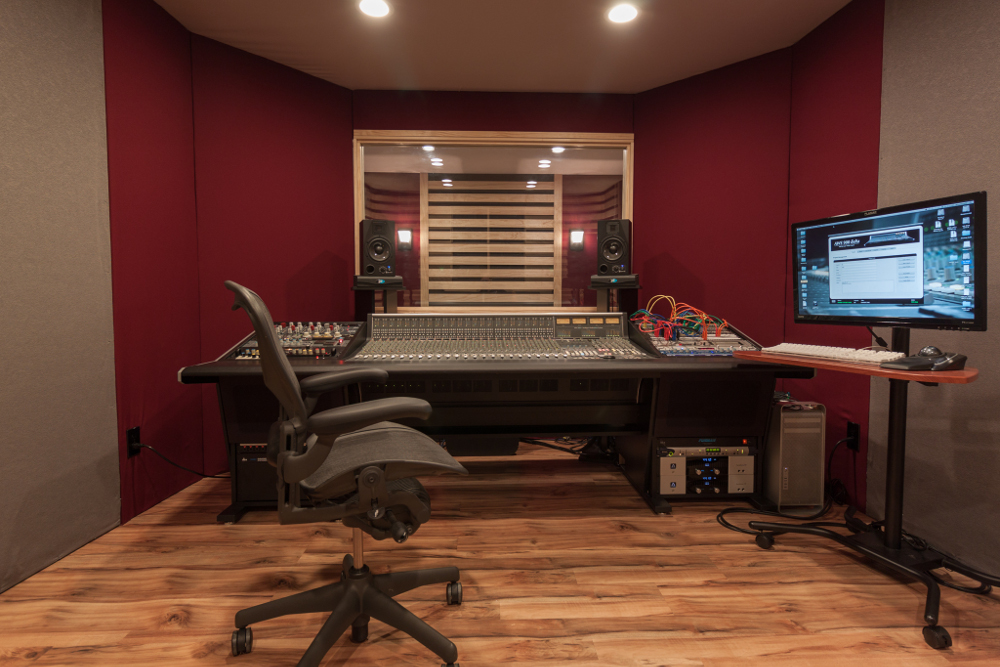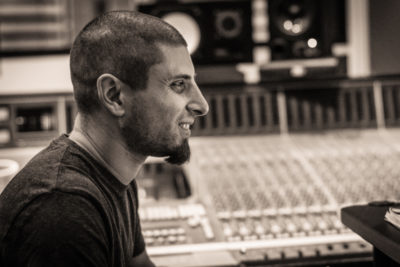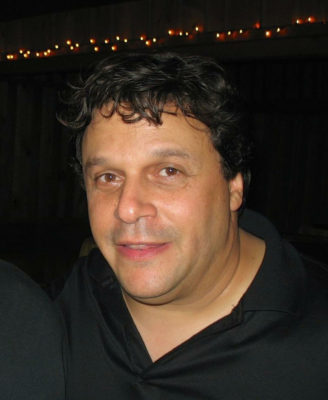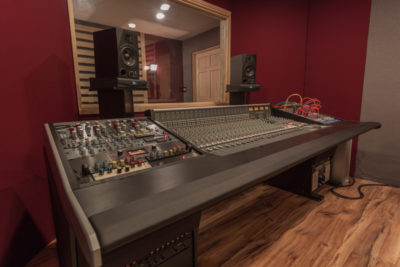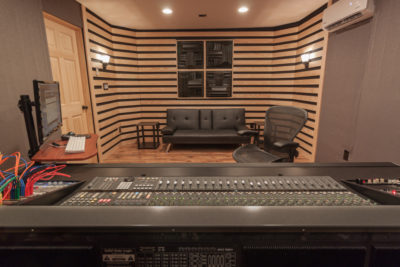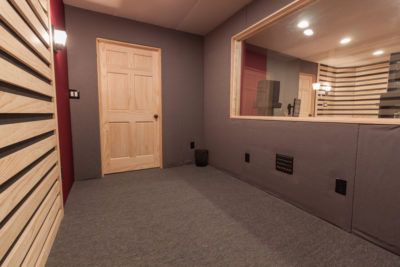Making the Mix Room: Mike Ferretti, Self-Titled Sound Studios — Ringwood, NJ
When do you go for it? Mike Ferretti had a feeling the time had arrived to go solo with his skills, so he built a studio.
As a result, there’s a fresh facility — Self-Titled Sound Studios — in Ringwood, NJ, dedicated to mixing and tracking overdubs. Armed with his discography (Sevendust, Thank You Scientist, Warren Haynes), years of formative experience with the late, esteemed engineer Jason Corsaro, and an unusually thorough education in both audio and music, Ferretti was ready to make his move.
With a musical background spanning rock guitar to French horn, this mixer is happy to pour on the distortion or break down an orchestral score. With abilities like these, it shouldn’t be surprising that Ferretti’s NJ mix facility isn’t ITB. Drill down to his love for the SSL AWS900 — the centerpiece of the studio — and you’ll discover a young gun who truly knows his stuff.
Mixer Name: Mike Ferretti
Website: http://www.mikeferretti.com
Location: Ringwood, NJ
Clients/Credits: Sevendust, Thank You Scientist, Warren Haynes, Call Me No One, Projected, Framing Hanley, Bernie Williams.
(Currently working on/Soon to be released) Weapons of Anew, Sidewise, Brand of Julez
Mix Philosophy: There are many aspects to the job of “mixer”, and I feel my personality suits the job perfectly. To me there are four main aspects, and I’m passionate about all of them.
It’s Creative – There’s the left brained aspect of it. The creativity involved in creating an emotional response from a song, sonically. Which is indeed the most important aspect of the job, of course. If you’re not at least painting the picture that the artist is envisioning, then that artist will look for someone else to paint their picture. And hopefully you present an image that they could not have even conceived of, but are blown away by.
It’s Technical – Mixing is a creative process, but it involves utilizing equipment of a highly technical nature. These two seemingly opposing aspects are what made me fall in love with mixing. I equally love picking up my guitar as I do reading a manual for a new piece of gear.
It’s Service Based – I’ve been doing this a relatively long time. I’m confident in my abilities and my vision. But sometimes the client wants something different than what I deliver. Yes, my name will be on the record as “mixer”, but in the end, it’s my job to convey the artist’s vision, not mine — I’ve worked with extremely talented creative professionals who couldn’t wrap their head around this, and I’ve watched them lose many clients over it.
It’s a Business – Another example of the seeming dichotomy of this job, and indeed many jobs in the Music Business. Many highly creative people are poor business people. And the opposite is certainly true, if not more so.
I love losing myself in a mix for a couple days, but I also love talking to bands about big picture budgeting. I’m happy to bring up to a band “Don’t just budget to make this record. Once the record’s done, then the hard part starts!” Have they budgeted for a PR campaign? A radio campaign? Touring that will probably be operating at a loss for a while?
This type of conversation may mean that they end up budgeting less for the record, and therefore me! But there’s nothing that could be better for my career than a band I’m working with to blow up and be the next big thing. That won’t happen if they spend their whole budget on making a record, and leave nothing for the other aspects of being successful. Though I’m not an expert in any of those other aspects, I want to try to steer clients on the correct path so they can make smart business decisions, not just emotional ones.
Heavy Metal: My musical background is certainly something that shapes who I am as an Engineer/Mixer. I play guitar, and was in a band through high school, but where I was really molded musically was in college.
I went to William Paterson University in Wayne, NJ. Dave Kerzner, who built the program there, designed it around an audio major having to be a full music major, getting a Bachelors in Music, as opposed to a Bachelors in the Arts. This means having to take private lessons on a core instrument, play in performing ensembles, take music theory, ear training, and piano classes.
I was a classical major, and played the French Horn through college. It’s an experience I wouldn’t trade for anything. Being an engineer involves constantly communicating with musicians. It seems obvious that you should speak the language. Being a performer also gives me perspective of what a musician is going through on the other side of the glass, and how to get the best performance out of them.
My background also means that I’m equally comfortable having a score put down in front of me on an orchestral date as I’m dialing in tones on an Uberschall. This may not come into play often in my world working on mostly rock records, but I’ve done quite a few albums where a string quartet comes in to add something to a song or two. Because of my background, there aren’t many situations in a session where I don’t feel comfortable.
Corsaro Counsel: While I was still in college, I started an internship at The Barbershop Studios in Lake Hopatcong, NJ. My first day there, I met Jason Corsaro. He was being hired as a freelance engineer at the time, but very soon after became the Chief Engineer at Barbershop (he preferred to be called the Shop Foreman).
I spent about a year fetching lunch and making coffee. One day, Jason’s assistant was sick. I was quietly sitting in the back of the room, and Jason turned around and asked if I knew how to use Pro Tools. I said I did, and got my first opportunity in the hot seat. That day was the beginning of almost three years straight of getting to sit next to Jason. I don’t think I fully understood how much of an incredible opportunity it was in the beginning. But I certainly did along the course of my tenure with him.
College taught me many things about audio. From signal flow to gain staging, mics that use magnetic induction vs capacitance, to Pro Tools shortcuts. My time at WPU is a cornerstone of my audio knowledge.
But Jason taught me how to make a record.
Sitting next to Jason taught me what it felt like to be in a session at the highest level. He demanded you always be on point. He would convey that feeling of, “No matter what, you better not fuck this up!” But it wasn’t in a negative way, it was because he was so passionate about creating something special. You were always aware that a single mispatch could mean you miss that magical take, the one that was going to make the difference.
I got to witness Jason’s ability to get incredible sounds on a daily basis. He could manipulate something seemingly benign into something sonically unique that would make the song, like he did with the Leslie guitar in Soundgarden’s “Black Hole Sun”. These types of things make the difference between a good mix and a great mix.
But just as significant to me was his work ethic. He demanded your best all day, every day (for very long days!). It shaped who I am today as an engineer and as a person.
Console Selection: I’ve been fortunate that my whole professional career has been in front of a SSL 9000 up until this point. I spent the first six years of my career on an XL9000K at The Barbershop, and the next six years on a SL9000J at Architekt Studios in Butler, NJ. When I decided to take the leap and build my own space, I couldn’t imagine not sitting in front of an SSL. It’s just such an integral part of how I work, and how I sound.
I briefly considered buying the 9000J I had been working on at Architekt for the last six years, as it was for sale. But it just didn’t make business sense. Between infrastructure with troughing, a machine room, multiple AC systems, adding electrical services, and of course the monthly power bill, it didn’t add up. It would have been an emotional choice that would have been a constant drain on my business.
I also considered putting together a summing setup. But once I had assembled a list of all of the pieces I wanted, the price ended up being similar to the used market of what I always knew was truly the perfect center piece of my mix room: An SSL AWS900.
I found my console scouring the web, as there weren’t many AWS’s on the market. I found one for sale at Professional Audio Design in Hanover, MA. Not exactly local to me, but drivable. After a few emails, I spoke to (PAD President) Dave Malekpour on the phone, and felt like they were the right fit.
This thing is truly awesome. It’s a fully featured SSL, through and through, and needs only one standard 120v outlet. There are no fans, and no external power supplies. It has Total Recall, is fully automated, has 25 high-end faders, 24 E/G switchable EQs, 24 mic pres, bus compressor, transport, monitor section, talk back…..It’s a mini K series. And most importantly, it sounds like an SSL. The second I started pulling up faders on a mix, I knew I had made the right choice.
And I still haven’t touched on its capabilities as a DAW controller. It’s inevitable going from 80 channels to 24 that there will be more sub mixing in Pro Tools, but the reality is that I touch the mouse and look at the screen much less. Even on an 80-input console, I would end up putting something like background vocals on a stereo pair, so that I could strap a compressor, or Dolbys (love the Dolby trick on BGV’s) across them. That meant that I would end up balancing and riding the BGVs with the mouse. Now I hit the “Focus” button and I can have all of the BGVs spread out on faders in front of me, even though they’re coming out of a stereo pair. It’s truly great!
Delta control acts and feels like traditional automation when I’m sitting at the desk, but when I turn to the computer, I can edit my rides in a way that was never possible on the old timecode-based systems. It’s amazing this desk came out in 2005 — SSL was way ahead of the game, and still is in my opinion.
Riding the Bus: My mix bus is a combination I stole from Jason Corsaro, though it was not something that was consistent for him. Jason would constantly change what he would use on the mix bus, but the Neve 33609/Telefunken EQ combination was one that instantly resonated with me.
The 33609 is a desert island piece for me. What it does blows my mind, and I’ve never used anything else that comes close. The way it glues things together is incredible. And it gives a vibe to the SSL mix bus that’s particularly appealing for a rock record.
The Telefunken EQs are a piece I feel get overlooked. The Barbershop had a pair of w495s that I would watch Jason use, and I ended up purchasing a pair of PEa’s. They’re very similar, but not exactly the same. They are easily the most musical EQs I’ve ever touched. The mid range just makes the whole mix jump out of the speakers, and the top is so smooth. You can add 15db of a 10k shelf (not that you’d want to) and it never gets even close to sounding harsh.
I also love that they are very broad. I personally would never want something surgical on the mix bus. If I had something with the options of a GML 8200 for example, I’m pretty sure I would end up doing more harm than good! If I hear something surgical that needs to happen, I’ll do it on an individual track or part. Other than that, I’d rather leave something like that to Andy VanDette in the mastering phase. It’s also a very conscious decision to use pieces on the mix bus with detented pots, making recalls fast and consistent.
My Monitors: When I started to engineer and mix my own projects at Barbershop, the only near field options they had were NS10s and Genelec 1031As. I wasn’t a big fan of the Genelecs, so I lived on the NS10s for a year or so.
When I started speaker shopping, the ADAM A7s had a mid range that reminded me of the NS10s, but with an extended and much more detailed high end, and more bottom. I was immediately comfortable on them, and also instantly hearing things I couldn’t hear on the NS10s. It made for a situation where I felt like I was very quickly making better decisions, though I still find NS10s very useful.
When I started mixing in rooms other than The Barbershop, I quickly realized how spoiled I was, being able to check the bottom on their full range Griffin mains. I needed a sub. The Genelec 7060b was the only sub that was meant to pair with speakers similar in size to the A7s, that was also truly full range, going down to 19 Hz. I also liked that it had the option of having a foot switched true bypass. I was figuring I’d mix mostly with the sub off, and then click it on to check the bottom. But it ended up being more of the opposite, with it on the majority of the time.
More Choice Pieces:
DAW: Protools HD3 / Melodyne Studio / Apogee Symphony I/Os with 32 out/16 in
Outboard/Hardware/Tape: Neve 33609, Telefunken PEa – Welded to the mix bus
API 2500 – Parallel drum bus
Lavry Blue – Capturing the magic of the SSL (currently saving for a Gold)
Vintech X81/473 – I could cut a whole record through Neve style pres. These have a little less vibe than the vintage units at Barbershop, but I feel that also makes them more versatile. And they don’t need a staff tech on hand to keep them fully functional!
Plugins: Soundtoys, Altiverb – I do some EQ and Compression in the box, but the console or outboard is where most of it happens. All of my FX are with plugins however, and these companies make some that I love.
Assorted Secret Weapons: It’s not a secret, but it’s all about the SSL!
Room for Tracking: My room is designed first as a mix room, but it’s also a very capable overdub room. I had the space, so I built a large iso booth with 16 mic ties, 3 speaker ties, and 3 instrument ties. It’s basically designed to be able to comfortably do everything but drums. I could squeeze a drum kit in, but it wouldn’t be something I would recommend to a client.
Instead, I plan on doing any live tracking and drum tracking at my first home, The Barbershop. I’ve known the Barbers since 2005, the year the Barbershop opened, so they know and trust me. I also know the room inside and out, so I can work very efficiently without the help of an assistant. Because of that, I can get my clients great pricing there. After drum tracking, we can go back to my studio for any and all overdubs.
This arrangement makes the most sense for me and my clients. Any large space I could reasonably build would never rival the amazing Fran Manzella-designed live room at The Barbershop. Never mind all of the incredible vintage mics and outboard gear. It makes more sense to bring my clients to a space like that to track strategic instruments, and then do any other overdubs, and of course mix, in my studio. The result is a recording with absolutely no compromises, while keeping budgets in check.
Tune Up: The room is very new, so this is still ongoing. However, I tried to start by keeping things consistent to what I was used to. I bought the Argosy “classic” speaker stands, which are exactly the same height as the meter bridge of an SSL 9k, and then spaced them exactly the same as I had been working for the last six years. Other than some very small movement front to back, that’s where they currently are, and I’m very happy with the results.
My good friend Earl Cohen (Lady Gaga, Nelly, Jessica Simpson) also came over for a day, and we experimented with my subwoofer location, orientation, and phase settings.
I’m not sure if I’m done, but I’m feeling very good about how the room is sounding now. I’m hearing details in the work I’ve been doing the last few years that I haven’t heard before.
For Example: Here are three examples of songs I’ve mixed —
Sevendust – Not Today

Thank You Scientist – Mr. Invisible

Candlelight Red – Demons

So You Want To Be A Better Mixer:
Practice, Practice, Practice
Mixing is like any other discipline. It helps to have a natural ability for it, but the best mixers are great because they do it over and over and continue to hone their skills. Reading articles or watching YouTube videos may be a source of inspiration when you’re stuck, but don’t default to those. Spend time EVERY DAY pulling up faders and spinning knobs. Find what works for you, and what doesn’t. There are no rules. There is no right or wrong. You need to have a vision in your head, and work on the skills you need to achieve that vision. And then hope other people dig it!
Turn the screen off
Or get it out from in front of your face. Things sound differently when you’re staring at a computer monitor. The brain will literally interpret the signals coming from your ears differently when it’s also dedicating brain power to looking at a computer monitor. And there are psychoacoustic effects to looking at the screen as well.
This is why I love using a monitor cart, as opposed to having the computer monitor on the meter bridge. I turn to the computer when I need to do something less creative like editing. But when I’m mixing, I can push the monitor cart away, and use the transport on the SSL. You’ll instantly hear your mix differently. Try it!
— Mike Ferretti, Self-Titled Sound Studios
Please note: When you buy products through links on this page, we may earn an affiliate commission.







